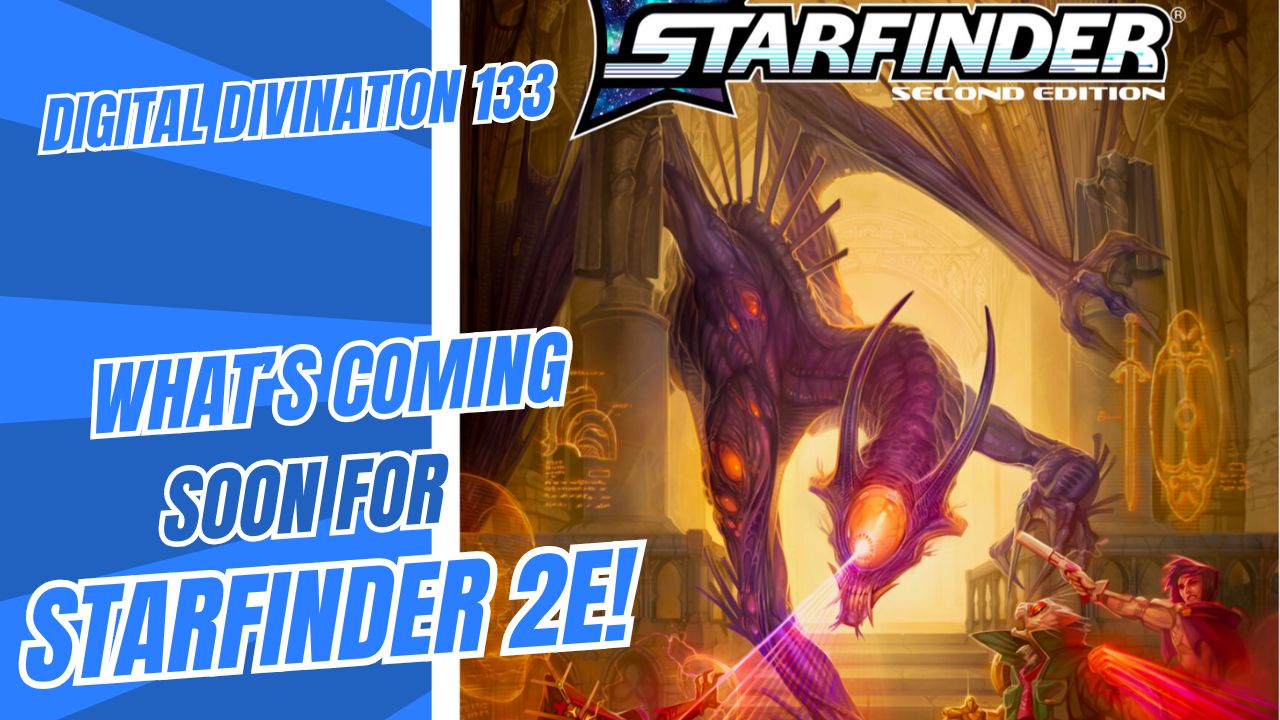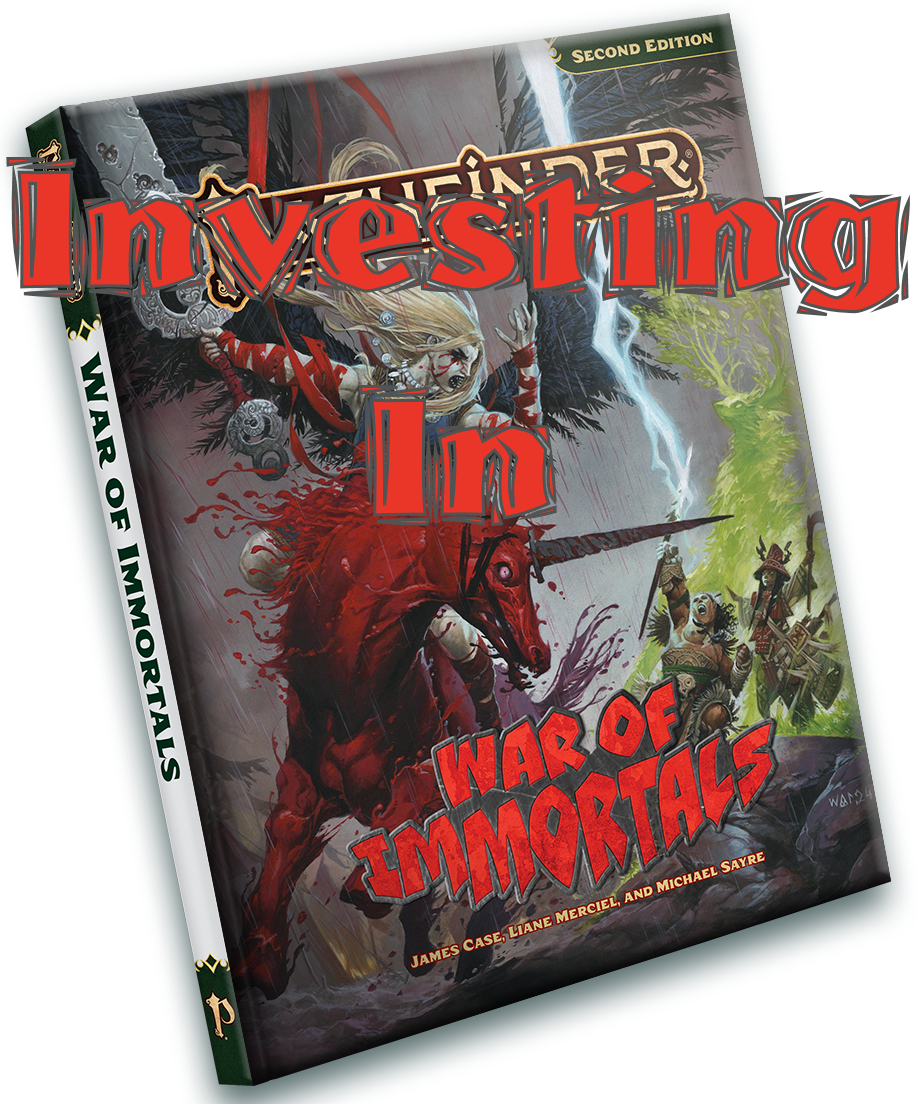A Dungeon Master supplement for high level play.
Publisher: Wizards of the Coast
Date Released: December 2007
Date Reviewed: February 3rd, 2010
Expectations
This is one of the few books I knew I would buy regardless of concept, reviews, or author. Elder Evils by Robert J Schwalb has the distinction of being the last 3.5 supplement published by Wizards of the Coast. I was purchasing this book not as a 3.5 D&D gamer; I purchased this as a 3.5 D&D loyalist.
That is probably why it sat on what remains of the shelf, unopened since I purchased it.
At a Glance
The cover is not only gorgeous, it captures the feeling of the book perfectly. A party of adventurers in the foreground, tiny compared to the monster in the background. This robed behemoth made up of worms –called The Worm that Walks, as we find out in chapter 9- swings a bizarre axe-headed morning star and takes out a whole building. To further emphasize the size of this thing, one of the worms that it is composed of is big enough to reach the adventurers on a roof. The colours are dark and depressing, accented by towering flames and The Worm that Walks’ glowing red eyes. A small gripe is that this cover features a generic, unknown party. After seven years with the Player’s Handbook’s iconic characters, it feels like they should have had the honour of gracing the edition’s last cover.
If WotC skimped on the production value of Elder Evils, it does not show. This book is packed with artwork, all original as far as I can tell, and top notch. I have a fondness for art depicting templates, like W. England’s Brood Spawn Ogre (pg 38). How do you make an ogre scarier? Cross it with a Tyranid.
The elder evils are all big ideas with elaborate execution, and the artwork and lair maps do them justice. Maybe it’s my affinity for GI Joe and Conan the Adventurer, but my favourites belong to Sertrous. On page 96, artist Izzy brings to life the guargantuan outsider described as a creature so bizarre the mortal mind translate what it sees into the closest terrestrial equivalent, a giant snake with a flower-like head. Seen taking on an army with ease, this is truly artwork of an epic challenge. His Serpent Reliquary on page 121 by cartographer Mike Schley turns a building of chaos into a logical layout that is easy for a DM to follow but mind bending for PCs to explore.
I don’t often list chapter headers as stand out artwork, but the chapter 7 header on page 96 rubbed me the right way. It’s a simple scene, with Krusk and Vadania dodging a lightning bolt, elevated by the attention to detail. Krusk’s eye patch indicates that he’s seen a lot of adventures since his debut in the PH. Vadania’s fangs imply she took the Aspect of Nature alternate class feature from Unearthed Arcana. Like the book itself, this artwork captures the growth of the 3.5 rules and history.
Highlights
Late DM Essential
3.5 spoiled players but starved DMs. The problem was that most DM-centric supplements were created with the same mentality as player-centric supplements: a feast of options. Keeping track of options makes a DM’s life harder. Rarely were there sourcebooks that made DMing easier. Elder Evils is a rare exception.
There is more to this book than just a bunch of high level and epic threats. Elder Evils is a campaign design guide in disguise. In addition to the titular villains, each chapter summarizes one of nine entire campaigns that generally run from low level to early epic level. It explains how to seed and nurture a plot so that a campaign inevitably leads to a world shattering conclusion without laying down tracks. The brilliance of this accomplishment shines in the tight format.
Each plot essentially runs the same way. Somewhere between 2nd and 5th level there is an early, insignificant sign that the PCs have no way of knowing marks impending doom. A few levels later, a similar but more pronounced sign occurs. By the next sign, a snowball effect has commenced and the PCs must rush to uncover the meaning and origins of these signs or they face unheard of disaster. None of the campaigns spend more than a page on the outline, and only a little more than that on the background. They allow DMs the freedom they need to run adventures their way or even insert an Elder Evil into a canned adventure or adventure path. Or DMs can design their own elder evil and use this book as a guideline. Like a good teacher, Elder Evils gives extra attention to those that need a guide and grants freedom to those that are more independent.
Easy to Use
This book could have been a formatting nightmare. There could have been an NPC chapter, a new monster chapter, a chapter outlining all of the elder evils, and finally a chapter of sample encounters. Instead, the first chapter contains all of the rules that apply universally to elder evils, and every chapter thereafter is a self-contained plot. Chapter two, for example, introduces Atropus, outlines Atropus’ plot, introduces all the NPCs and monster relevant to Atropus, and then lays out the series of encounters that end the Atropus campaign. Each encounter is a two page spread that summarizes the sequence of events, key environmental features, what the PCs will be encountering, and a layout. There isn’t much room behind a DM screen, so only needing a book open to a two page spread (occasionally flipping back no more than a dozen pages or to chapter one) to run an elaborate and original encounter is so very appreciated.
This highlight has a caveat, which I address in the low points.
Referential
I can understand that not everyone will be grateful for this the way I am, but Elder Evils is more than just the last 3.5 book WotC released. By using material from all five Monster Manuals, books from both Complete series, and the majority of the 3.5 sourcebook library, Elder Evil is an endcap for the edition. It can be a bit overwhelming, especially keeping track of where the referenced options come from, but seeing NPCs with levels in non-core classes like the hexblade, a wide variety of spells from the Spell Compendium, and monsters from any book that printed monsters is very fulfilling. The return of vile damage (introduced in The Book of Vile Darkness) alone made me giddy. It makes 3.5 feel like one living ruleset rather than a core body with multiple unrelated appendages. Elder Evils even mentions an adventure path from Dungeon magazine. This may be the only 3.5 sourcebook that acknowledges Dragon and Dungeon magazines even existed, other than the Dragon Compendium.
A DM can get by without a full shelf of 3.5 sourcebooks, with alternatives offered for some of the heavier rules like psionics. For those of us that take great pride in our vast 3.5 collections and knowledge, this is the perfect sourcebook to say good-bye to the edition.
Low Points
High Level Headaches
High level play has issues. Among them save or die and save or do nothing spells and effects, massive amounts of ability damage, strange brews of poisons, diseases, and conditions countering or conflicting with buffing spells and magic items. There is also a lack of out-of-the-box threats. If a DM does not want to repeatedly run D&D’s deadly Ds (demons, devils, and dragons), then lower level threats need to be advanced. If you think running a spellcasting monster is tough, try a spell casting monster with a template, multi-class levels and a prestige class you’ve never heard of.
This is the caveat to Elder Evils’ ease of use. The end game encounters are still complex and frustrating. The elder evils all have high spell resistance and some of their minions are even immune to magic. Casters might as well roll against the creature’s SR at the start of their turn to see if they should even bother doing anything. It may seem logical to give the elder evils fear effects, but saying all creatures within 30 feet that fail a DC 30 Will save are dominated is like saying “screw you” to the fighter PC, “why don’t you just stay back and pretend your arrows are actually overcoming the creature’s damage reduction?”
The problems inherent in 3.5’s high level play are not the fault of Elder Evils, and it was too late in the game for WotC to develop new rules to make it easier. Regardless, this is the playground Elder Evils chose to play in and anyone that wants to play with it better be prepared for lava instead of a sand box, spikes built into the slides, and a swing set of strangulation.
Repetitive
While there is some great variety from one monster to another and one suggested campaign to another, there are a lot of unnecessary trends. The majority of the campaigns outlined in Elder Evils involve an NPC pawn that the PCs know (and usually trust) secretly trying to raise a creature that will destroy existence as they know it. Technically this one book houses years of content if a gaming group were to run each of the nine campaigns back to back, but the repeated clichés mean the fun will run out before the content.
Confusing XP Rewards
Why constantly indicate that due to the environment increase the XP reward is 125%-150%? Why not just give the environment it’s own CR?
Juicy Bits
There is so much to choose from, but I will restrain myself.
Harvester of Souls (pg 13) is a vile feat that returns the fear of death to D&D.
Caira Xasten (pg 20) is a mad NPC. She shows how bad a bard can be.
Ragnora (chapter seven) is the most fiendish of the elder evils. What PC will question an unexpected boost in the effectiveness of healing spells? None, until everyone starts over healing, growing more flesh and blood than a body can take.
Overall
What a surprise! Elder Evils was such a fun and inspiring read, I found myself wanting to run each campaign as I read it and plotting new elder evil campaigns of my own. To all DMs, buy this book if you can. Keep in mind, though, that only one person in a gaming group can read this book beyond chapter one.
If You Liked This Book…
A DM that wants to evil up his game can not go wrong with The Book of Vile Darkness.
I could recommend either the DMG or the DMG II, but honestly, both these books should be ashamed that they did not cover campaign design as elegantly as Elder Evils.




Leave a Reply